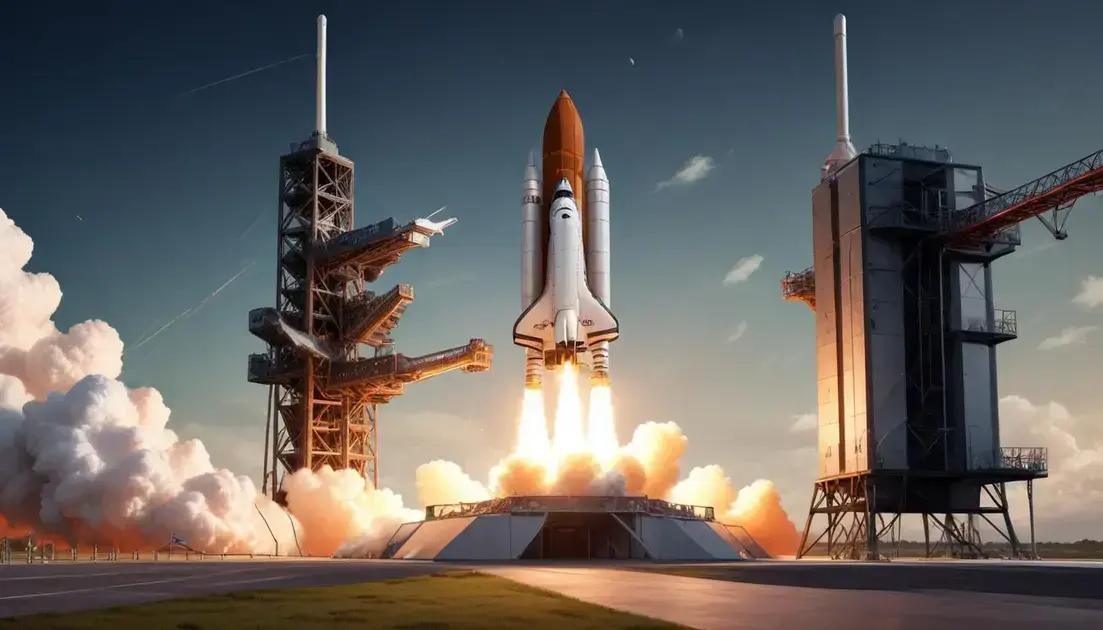
Voyager: Beyond the Solar System
The Voyager missions have made significant contributions to our understanding of the solar system. Launched in 1977, Voyager 1 and Voyager 2 provided stunning images and data about the outer planets, including Jupiter and Saturn. They revealed characteristics like the Great Red Spot on Jupiter and the intricate rings of Saturn. These discoveries have greatly impacted space exploration, inspiring future missions and increasing our curiosity about life beyond Earth. As these spacecraft continue their journey into interstellar space, they remain vital for research and future exploration.
The **Voyager** missions have fascinated us since their launch, providing unparalleled insights into our solar system. Ready to explore what they discovered?
1. Introduction to the Voyager Missions
The Voyager Missions began in 1977, aiming to explore the outer planets of our solar system. The two spacecraft, Voyager 1 and Voyager 2, were launched within weeks of each other. They have traveled billions of miles and provided stunning images and data about Jupiter, Saturn, Uranus, and Neptune.
Both Voyager craft have unique features. Voyager 1 is now the farthest human-made object from Earth, while Voyager 2 is the only spacecraft to have visited all four gas giants. This has made these missions incredibly important for scientists.
What They Did
During their journey, the Voyagers collected detailed information about the atmosphere, moons, and rings of each planet. For example, Voyager 1 gave us close-up views of Jupiter’s massive storms and Saturn’s beautiful rings. These discoveries helped us understand our solar system better.
The Golden Record
Each Voyager carries a Golden Record, which contains sounds and images from Earth. This record is meant to communicate the story of our world to any extraterrestrial beings that might find it. It’s a message of peace and curiosity, showcasing our planet and its inhabitants.
The missions highlighted the vastness of space and our place within it. They’ve pushed the boundaries of human exploration and inspired generations. The legacy of Voyager is truly remarkable and continues to influence space science.
2. Key Discoveries from the Outer Planets
The Voyager missions gave us incredible insights into the outer planets. Voyager 1 and Voyager 2 sent back stunning images from their travels. They revealed the beauty and complexity of planets like Jupiter and Saturn.
One major finding was Jupiter’s Great Red Spot. This massive storm is bigger than Earth and has raged for centuries. Scientists learned about its structure and the intense winds that power it.
Voyager also uncovered details about Saturn’s rings. These rings are made of ice and rock, creating a breathtaking sight. The spacecraft showed us the gaps in the rings and the moons that shape them.
With Voyager 2, we explored the ice giants, Uranus and Neptune. We learned that Uranus has a unique tilt. This makes its seasons very different from other planets. It also revealed Neptune’s strong winds, reaching over 1,200 miles per hour.
The missions helped scientists discover many moons. For instance, Jupiter has more than 79 moons. Some, like Europa, are thought to have oceans beneath their icy surfaces, raising questions about possible life.
These discoveries changed our understanding of the solar system. They showed how dynamic and varied each planet is. The data collected from Voyager continues to inspire space exploration and research today.
3. Impact on Space Exploration
The Voyager missions changed how we view space exploration. They opened up new possibilities for scientific discovery. Before Voyager, our knowledge of the outer planets was limited.
The detailed images and data from Voyager 1 and Voyager 2 have inspired many scientists. They pushed the limits of what we thought was possible. This has led to more ambitious missions to distant worlds.
Thanks to Voyager, we learned the importance of interplanetary travel. The data gathered helped design better spacecraft for future missions. The lessons learned from Voyager are still being applied today.
Scientists now understand the dynamics of gas giants and their moons more than ever. This knowledge helps researchers explore other systems beyond our own. For example, missions to Saturn’s moon Enceladus and Jupiter’s moon Europa are inspired by what we learned.
The Voyager missions also highlighted the value of international cooperation in space. Many countries now partner on various space projects. Working together allows for sharing resources and expertise, making missions more successful.
As we look to the future, the impact of Voyager will continue. New missions will build on the foundation it created. The spirit of exploration it sparked will drive humanity further into the cosmos.
4. Future of Voyager Missions
The future of Voyager Missions is exciting. Both Voyager 1 and Voyager 2 are still sending back data. Even after decades, they continue to teach us about space.
As these spacecraft move further away, they enter new regions, like the interstellar space. Scientists are eager to see what they find there. The data from Voyager can help us understand cosmic rays and the boundary of our solar system.
Future space missions will build on Voyager’s legacy. New technology aims to reach further and explore even more distant worlds. Missions to other star systems may become possible, thanks to the groundwork laid by Voyager.
Scientists are also analyzing the data collected by the Voyagers for new insights. Concepts learned from these missions will guide future research on exoplanets. Understanding distant worlds is crucial for discovering life beyond Earth.
The Voyager missions remind us of the importance of curiosity. They inspire the next generation of explorers and scientists. As we continue to push the limits of exploration, the spirit of Voyager lives on.
Conclusion
In conclusion, the Voyager missions have changed our understanding of the solar system and beyond. They have provided valuable data and inspired future explorations. As Voyager 1 and Voyager 2 continue their journey, they remind us of the vastness of space and our place within it.
The discoveries made by Voyager teach us about the gas giants and their moons. They also spark questions about life on distant planets. The future of space exploration is bright, fueled by the lessons learned from these remarkable missions.
Ultimately, the spirit of curiosity and exploration driven by Voyager will lead to new discoveries. The legacy of these missions will influence scientists and explorers for years to come. Let’s keep looking to the stars and dreaming big!


